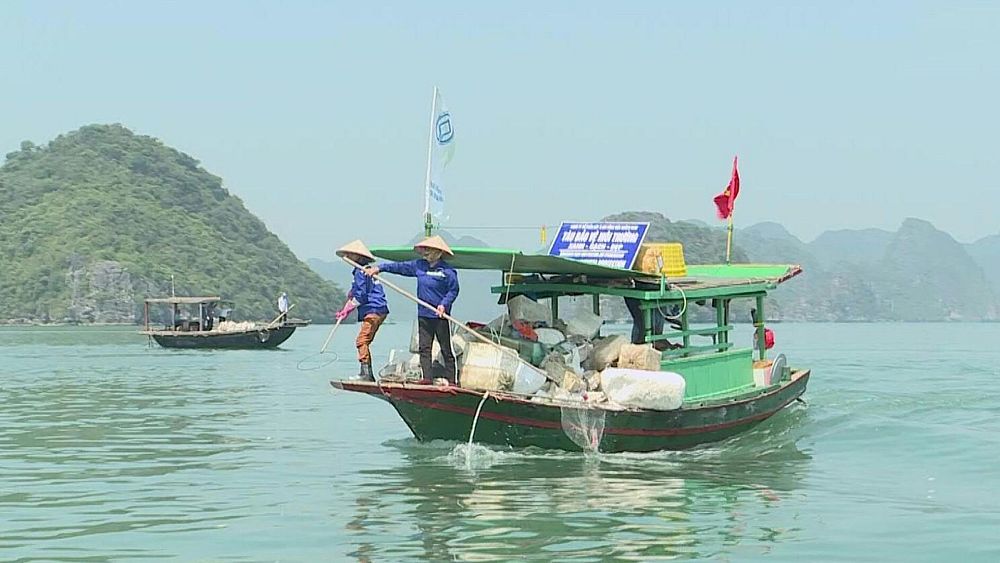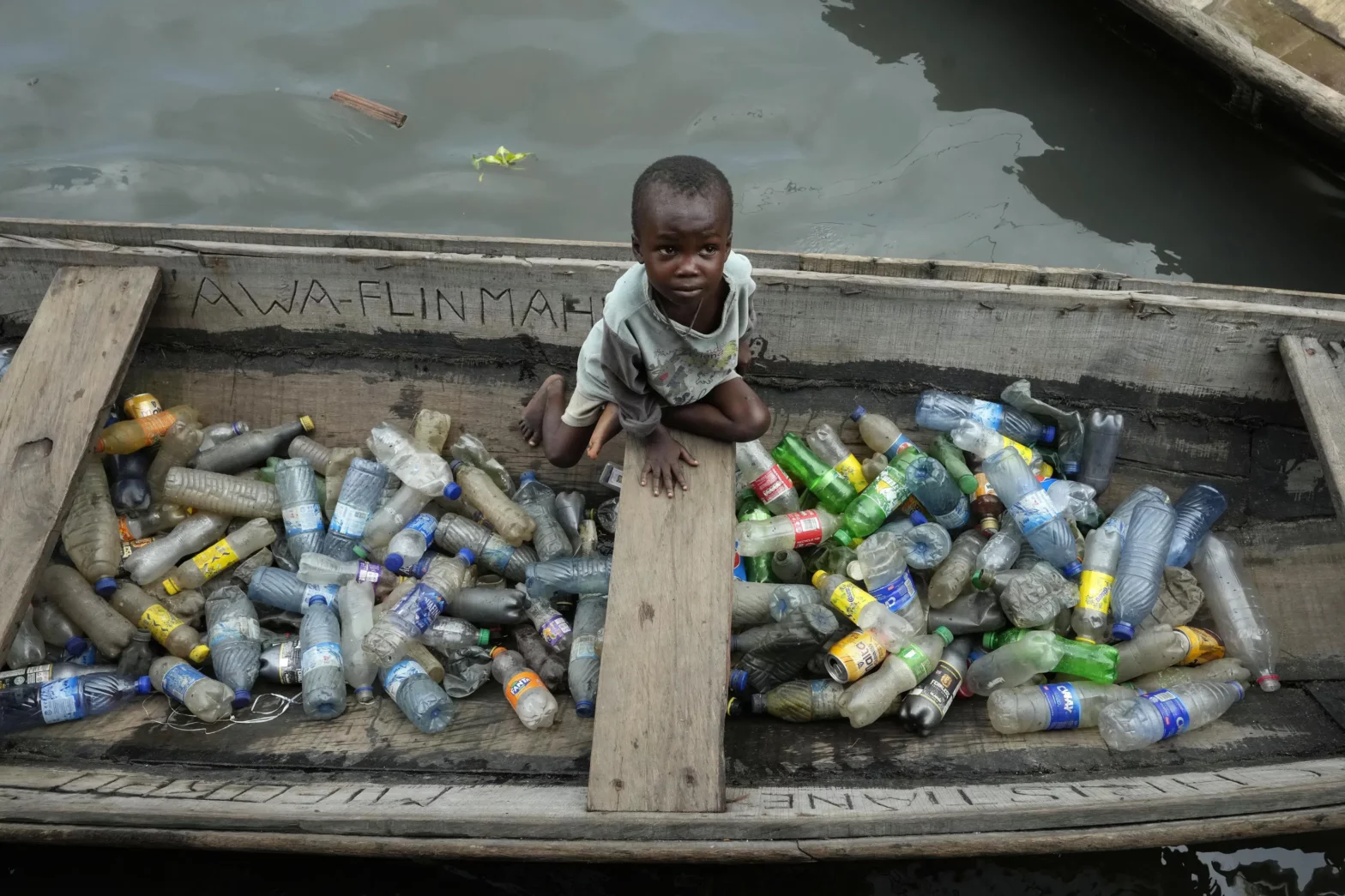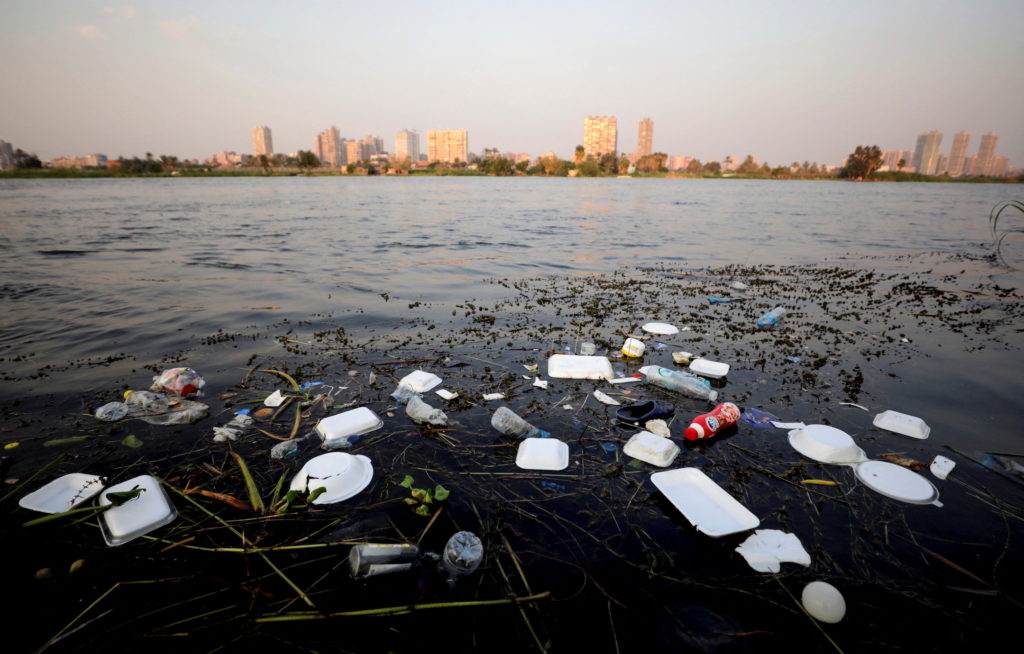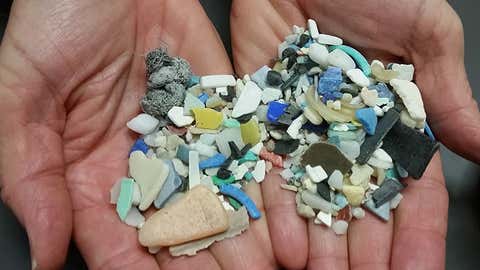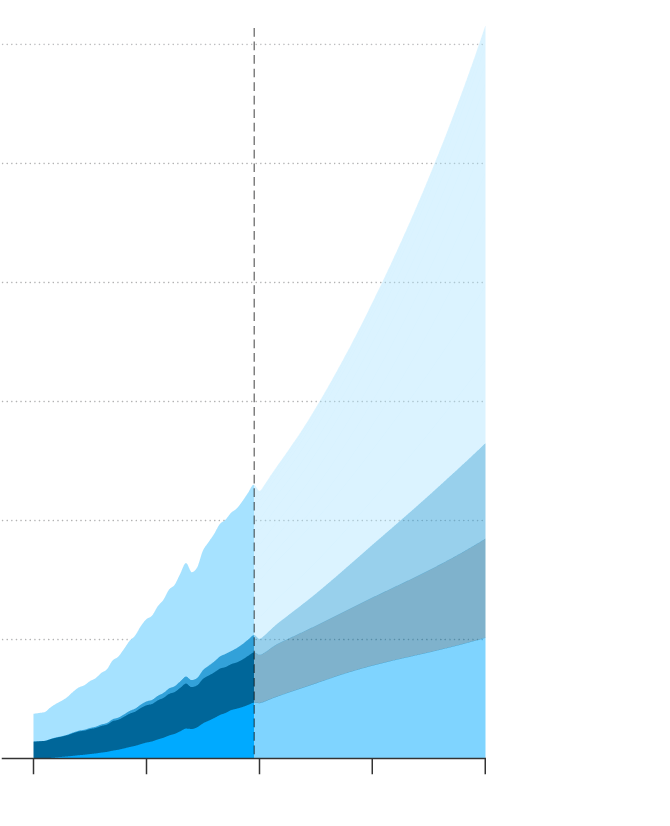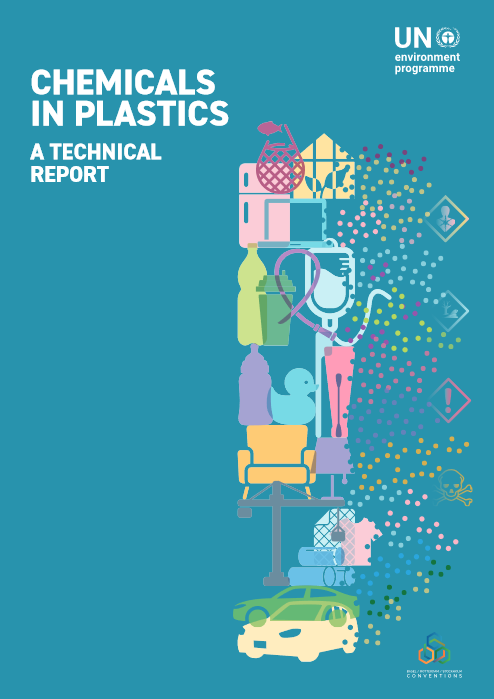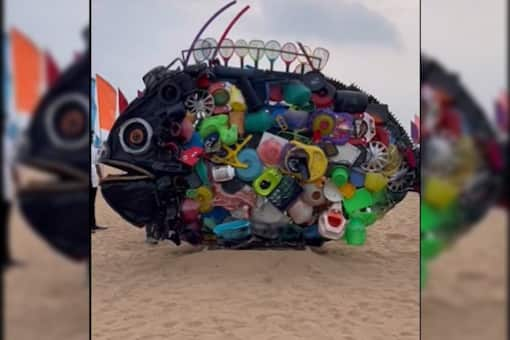The trash burning industry was eager to show it is not a polluting relic but a pioneering clean tech sector worthy of millions of dollars in new federal subsidies. But its invitation to the Environmental Protection Agency to visit a Michigan “waste-to-energy” facility needed to be timed right.“I don’t think we want EPA in the plant while we are setting off explosives in the boiler,” said a September email exchange between executives at Covanta Energy regarding the facility, which was about to go through the messy maintenance procedure. “The air will be filled with Ash dust and it may not have great optics.”As the Biden administration allocates billions of dollars in new climate subsidies, environmentally challenged industries are sharpening their green pitches. The companies argue they are just as entitled to lucrative federal incentives as solar farms or electric carmakers, and are working to frame their businesses as global warming solutions. The money up for grabs from the Inflation Reduction Act and other programs are in amounts large enough to guide whether they thrive or go the way of leaded gasoline and asbestos.A quiet lobbying campaign by waste incineration operations is documented in emails disclosed through public records requests, filed by the nonprofit Friends of the Earth. They offer a glimpse at how one beleaguered legacy industry is maneuvering to qualify for these federal dollars, saying their plants can help stop climate change at the same time environmental justice groups in the communities they serve are trying to shut them down.“How can this be a climate solution at all?” said Maria Lopez-Nunez, a Newark activist working to close the waste-to-energy plant there, and a member of the White House Environmental Justice Advisory Council. “They are discharging mercury, arsenic, lead. I hope no one falls for this scam.”Covanta, the incineration company that sent many of the emails, told The Washington Post that the timing of the EPA visit to a plant it operated until earlier this year was not meant to mislead regulators, but to plan for a routine yet dusty process during which plants are typically closed for tours.Companies that burn municipal waste are not the only ones working on their green credentials as regulators lean into the energy transition. Oil companies are pressing the case that a chemical process of melting down plastic and repurposing it for things such as jet fuel is not incineration at all, but “advanced recycling.” The embattled ethanol industry, burdened with scientific findings that its product has a heavier carbon footprint than gasoline, is positioning itself as the linchpin of climate friendly air travel.The waste-to-energy industry is asking to be folded into a potential expansion of the Renewable Fuel Standard program, a huge alternative fuels incentive that the EPA may modify to include producers of clean electricity that power electric vehicles. The companies that burn garbage are also eager to be certified as an energy provider for production of “green hydrogen,” a fuel that must be made with zero-carbon emissions electricity to fetch generous new subsidies.It all hinges on regulators embracing the industry’s accounting methods for its carbon footprint.How a pricey taxpayer gamble on carbon capture helps Big Oil“We are starting to push EPA and the White House,” said a February email from Paula Soos, head of government relations at Covanta Energy, which operates more than 30 U.S. plants where trash is burned to make electricity. She was writing Darwin Baas, the director of the public works department in Kent County, Mich., which has its own large incinerator. “This obviously would be a significant revenue stream to Kent [County] DPW,” Soos wrote.Soos declined to be interviewed. But Baas and a Covanta spokesperson told The Post that it is too early to say how big that potential revenue stream is. Data in the records obtained by Friends of the Earth suggest the EPA subsidies could bring in more than $3 million annually for a similar plant in Pennsylvania.Such revenue could be crucial to the survival of an industry that helps power millions of homes and businesses by burning trash to create steam used in electricity generation.Four dozen incinerators across the United States have closed since 2000, according to the nonprofit Energy Justice Network, as community activists and national environmental groups target the technology as particularly harmful to the environment and public health. More than 80 percent of the remaining 60 facilities in this country are located in places where many residents are people of color or low income, according to a mapping project by the Tishman Environment and Design Center. Federal data shows they are emitters of toxins linked to medical problems, including particulate matter, dioxins, lead and mercury.Industry officials claim the technology is more sustainable than landfills, which create a huge climate problem as rotting trash releases potent greenhouse gas emissions while slowly decomposing. Covanta said in an email to The Post that burning trash for electricity has cut landfill greenhouse gas emissions by 30 million tons per year, making the electricity they produce even more climate friendly than “traditional renewable like wind and solar when viewed from a lifecycle perspective.” It pointed to studies concluding the plants are not a public health hazard.But arguments that turning the trash into electricity is a tidy, “circular” solution to the waste problem are increasingly met with skepticism by regulators in the United States and Europe.California last year revoked a long-standing law that allowed trash burned at its two incinerators to be counted toward the state’s recycling and reuse goals, with lawmakers championing the change pointing to studies — disputed by Covanta — that found burning trash drives at least as much global warming as sending it to a landfill. A few years earlier, New Jersey Gov. Phil Murphy (D) also cited climate and environmental justice worries when he vetoed provisions of a waste reduction law that would have allowed food manufacturers to comply by shipping their waste to incinerators that produce energy.Denmark, where a trash-to-energy incinerator in Copenhagen is a national landmark, complete with a downhill ski run built into its sloped roof, is now decommissioning nearly a third of its trash burning capacity, citing climate concerns. Scotland has placed a moratorium on new incinerators in its bid to meet climate goals.How a tax break meant to curb climate change could make it worseOne potential lifeline for the industry in the United States is the Renewable Fuel Standard. The industry is hoping to be awarded proposed electric “renewable identification numbers,” or e-RIN credits, that fossil fuel producers could purchase to meet EPA mandates in lieu of making their own alternative fuels.Emails show Covanta worked to keep its push for alternative fuel subsidies off the radar of environmental justice advocates. As part of that strategy, Covanta in February urged its allies to delay engaging in a separate battle in the administration over incineration pollution.“We strongly believe if a letter goes out now … it will create a significant public uproar on [waste to energy], right at the very time we are trying to convince EPA that they can include [waste to energy] in the [Renewable Fuel Standard] without a lot of backlash,” said the email from Soos. “I think the timing is way off, and public controversy will undermine our e-RIN efforts.”The EPA would not answer questions about its site visits and other engagement with the industry, saying in a statement only that it is working to finalize new rules for the alternative fuels program by mid-June.Worries about the environmental justice optics emerge throughout the industry email exchanges. One Covanta official expressed concern that the group is highlighting the pollution controls in a York County, Pa., facility as part of its lobbying campaign. “I feel we need to include a facility that mirrors York that is an [environmental justice] community to show them we aren’t just careful in white communities,” he wrote.In the shadow of the large waste-to-energy plant in Chester, Pa., a predominantly Black city, the air is heavy with an odor so foul that residents wear masks when they step out of their houses into the open air. Local activist Zulene Mayfield shows reporters the shell of a row home she said she abandoned when conditions on the perimeter of the 30-year-old plant became unbearable. Those that remain tick off the ailments they and their children are experiencing.“This is dangerous,” said Darlynn Johnson, 40, a lifelong resident of the neighborhood. Three of her four children, she said, have been diagnosed with asthma. The remaining child is one-year-old. “With him being out here, I know he is going to be diagnosed next,” Johnson said. “This is not okay.”The health problems of the area, where children have asthma at five times the national average, are well documented, as are some of the harmful emissions that have come out of the plant over its lifetime. But the facility sits in an industrial hub, leaving researchers unable to link specific plants to clusters of disease. Covanta says pollution from the plant has been cut considerably over the years, and that its emissions are far below what federal standards allow.In its email to The Post, Covanta said its goal is to get some of the same subsidies available to landfills that convert their emissions into energy. In a separate email, Baas said the federal money the industry is seeking would help keep his Kent County plant financially viable, at a time when it needs $40 million in upgrades and the energy it generates fetches lower prices on the electricity market than it did 30 years ago.Unleash the deep-sea robots? A quandary as EV makers hunt for metals.The corn ethanol industry has a similar problem. As the Biden administration writes the rules for generous new subsidies for climate-friendly jet fuels, corn ethanol may not make the cut. Several studies show that for much of the ethanol supply, emissions offer no improvement over fossil fuels.Ethanol industry groups make the case that those studies are outdated and otherwise flawed. If the administration uses stricter standards, the ethanol industry group Growth Energy warns, “rural communities will be locked out from contributing to a cleaner climate, and our ability to decarbonize the airline fleet will suffer.”But the Environmental Defense Fund and other advocacy groups say the industry’s arguments are exaggerated and often unsupported by science.“If we get this wrong,” said Mark Brownstein, senior vice president for energy at EDF, “the taxpayer is not going to get fundamentally lower carbon fuel.”The plastics industry is engaged in its own green branding blitz.The industry has filed 17 permit applications with the EPA to make fuels from discarded plastics. The products could eventually be sold as sustainable aviation fuel — depending on how the administration drafts regulations — making them eligible for a raft of subsidies.But the process typically used — called pyrolysis — is highly toxic, according to EPA data. The Natural Resources Defense Council describes it as “fraught with health, environmental, social, and economic concerns.” The plastics industry contends it’s safer than incineration and has another way of describing it: “Advanced Recycling.” ExxonMobil and other oil and chemical companies are promoting this process through a group called the “Alliance to End Plastic Waste.”At the Plastics Industry Association “Refocus” conference in Minneapolis earlier this month, Melanie Bower, an ExxonMobil senior sustainability adviser, told colleagues in the sector to push the talking point that the process should no longer be subject to the same strict Clean Air Act rules as waste incineration, according to a recording of the panel shared with The Post by an attendee.“It’s sad in a way that in the U.S. we’re faced with this false narrative that advanced recycling is incineration or burning of plastic,” Bower said. Congressional regulators see it differently than Bower. An advisory addendum the House Appropriations Committee sent President Biden along with the latest federal budget bill urges the EPA not to bend to the industry on Clean Air Act rules.“These chemical recycling technologies do not result in the recovery of plastic materials to advance a circular economy,” the note said, “and the facilities contribute to climate change and impose disproportionate health burdens on the communities where they are located.”
Category Archives: Plastic Pollution Articles & News
'It makes you sad’: Tourists and fishermen leave Vietnam’s Ha Long Bay covered in trash
Ha Long Bay is one of Vietnam’s most beautiful nature site. But the UNESCO world heritage site threatened by deluge of plastic waste.
Squinting in the bright light of a hot summer morning, Vu Thi Thinh perches on the edge of her small wooden boat and plucks a polystyrene block from the calm waters of Vietnam’s Ha Long Bay.It’s not yet 9am, but a mound of styrofoam buoys, plastic bottles and beer cans sit behind her.They are the most visible sign of the human impacts that have degraded the UNESCO World Heritage Site, famed for its brilliant turquoise waters dotted with towering rainforest-topped limestone islands.”I feel very tired because I collect trash on the bay all day without much rest,” said Thinh, 50, who has been working for close to a decade as a trash picker.”I have to make five to seven trips on the boat every day to collect it all.”Waste threatens spectacular Ha Long BaySince the beginning of March, 10,000 cubic metres of rubbish – enough to fill four Olympic swimming pools – have been collected from the water, according to the Ha Long Bay management board.The trash problem has been particularly acute over the past two months, as a scheme to replace styrofoam buoys at fish farms with more sustainable alternatives backfired and fishermen chucked their redundant polystyrene into the sea.Authorities ordered 20 barges, eight boats and a team of dozens of people to launch a clean-up, state media said.Do Tien Thanh, a conservationist at the Ha Long Bay Management Department, said the buoys were a short-term issue but admitted: “Ha Long Bay… is under pressure”.More than seven million visitors came to visit the spectacular limestone karsts of Ha Long Bay, on Vietnam’s northeastern coast, in 2022.Authorities hope that number will jump to eight and a half million this year.But the site’s popularity, and the subsequent rapid growth of Ha Long City – which is now home to a cable car, amusement park, luxury hotels and thousands of new homes – have severely damaged its ecosystem.Conservationists estimate there were originally around 234 types of coral in the bay. Now the number is around half.There have been signs of recovery in the past decade, with coral coverage slowly increasing again and dolphins — pushed out of the bay a decade ago — coming back in small numbers, as a ban on fishing in the core parts of the heritage site expanded their food source.But the waste, both plastic and human, is still a huge concern.”There are so many big residential areas near Ha Long Bay,” said conservationist Thanh.”The domestic waste from these areas, if not dealt with properly, greatly impacts the ecological system, which includes the coral reefs.”Ha Long City can now handle just over 40 percent of its wastewater.”Single-use plastic is now banned on tourist boats, and the Ha Long Bay management board says general plastic use on board is down 90 percent from its peak.But trash generated onshore still lines parts of the beach, with a team of rubbish collectors not able to block the eyesore from tourists.‘Plastic pollution crisis’ in Ha Long BayPham Van Tu, a local resident and freelance tour guide, said he had received a lot of complaints from visitors.”They read in the media that Ha Long Bay is beautiful, but when they saw a lot of floating trash, they didn’t want to swim or go canoeing and they hesitated to tell their friends and family to visit,” he said.Rapid economic growth, urbanisation and changing lifestyles in communist Vietnam have led to a “plastic pollution crisis”, according to the World Bank.A report in 2022 estimated 3.1 million tonnes of plastic waste are generated every year, with at least 10 per cent leaking into the waterways, making Vietnam one of the top five plastic polluters of the world’s oceans.The volume of leakage could more than double by 2030, the World Bank warns.Larissa Helfer, 21, who travelled to Vietnam from her home in Germany, said Ha Long Bay was beautiful but the trash problem would be one of her strongest memories of the trip.”Normally you (might say) ‘Look at the view! Look at the fishing villages!” she told AFP.But here “you have to talk about the trash, (you say) ‘oh god… look at the plastic bottles and things in the sea.’ And it makes you sad.”Thinh, the trash collector, grew up in Ha Long and remembers a very different bay.”It didn’t look so terrible,” she said.”Of course, a lot of work makes me tired and irritated,” she admitted. “But we must do our work.”
UN talks on a treaty to end global plastic pollution open in Paris
PARIS (AP) — A United Nations committee met in Paris Monday to work on what is intended to be a landmark treaty to bring an end to global plastic pollution, but there is little agreement yet on what the outcome should be.The Intergovernmental Negotiating Committee for Plastics is charged with developing the first international, legally binding treaty on plastic pollution, including in the marine environment. This is the second of five meetings due to take place to complete the negotiations by the end of 2024. At the first meeting
After a plastic bag ban, Kenya takes another shot at its pollution problem
In the sprawling dump in east Nairobi, Emmanuel Lucy rummages through glass, metal, leftover food and dirt. The 25-year-old waste collector sorts quickly, picking out plastic bottles with one gloved hand, and throwing them into a large woven sack with the other.Lucy is one of thousands of workers who sort through Kenya’s street and landfill waste for recyclable materials. On a good day at the Dandora dump, he makes 350 Kenya shillings (£2) for several kilograms of plastic bottles, which he sells to recyclers through agents. It’s familiar work – he has done it on and off since he was eight years old.The production of plastic products has exploded over the past decade. Nairobi, Kenya’s capital – with a population of nearly 4.4 million – generates more than 2,400 tonnes of solid waste every day – a fifth of which is plastic.“The amount of plastic waste is quite significant,” says Jane Mutune, an environmental studies lecturer at the University of Nairobi.Kenya banned single-use plastic bags in 2017 – a move that was lauded as groundbreaking. The national environmental authority says 80% of the public have complied with the ban. In 2020, single-use plastics were prohibited in protected areas such as parks and forests.Despite the success of the bag ban, it has not been enough to eliminate the country’s struggles with pollution, as it did not include many other forms of plastic, including bottles, rubbish bags and takeaway containers.“We need to be careful that we don’t defeat the essence of the ban by allowing so much [plastic waste] by primary packaging,” says the environmental activist James Wakibia, who pushed for the ban on plastic bags.“Going down to the river and seeing so many plastic bottles and other kinds of plastic garbage … it frustrates me a lot,” he says. “We need to broaden the campaigns and fight against plastic pollution.”On the roads to Dandora, plastic litter lines the streets, threatening to block drains during heavy rains.“The dumpsite is a real menace,” says Gregory Ngugi, who runs a local youth group, the Dandora Youth Multipurpose. “Many of the trucks transport the garbage exposed, so it goes spilling on the road.”The air around the site is filled with the smell of rancid waste. Garbage collection services in the neighbourhood are informal and woefully inadequate, says Ngugi, so residents often litter or dump household waste by the roadside.Waste pickers such as Lucy, who play a significant role removing plastic from the streets and landfill, face a tremendous amount of stigma due to their work. The work exposes them to cuts, bacterial infections and diseases such as cholera. Those who sleep and eat at the dump risk coming into contact with toxic substances.“We are exposed to death every day,” says John Chweya, the chair of the Kenyan National Waste Pickers Association. “Waste pickers do most of the work out of the pollution that companies are bringing to the environment. But we hardly get anything out of the job.”skip past newsletter promotionafter newsletter promotionDandora residents fear the expansion of the 12-hectare (30-acre) landfill in the coming years. The land on which it sits used to host a kids’ play area and a bar called Peru.A sustainable waste management law, which will come into force in July, will require companies to reduce the pollution and environmental impacts of the products they introduce into the Kenyan market – either individually or through collective schemes. Previously, businesses were not obliged to take part in waste collection and recycling schemes such as Petco, an initiative created in 2018 after authorities threatened to ban the production and sale of plastic bottles. Only a few companies signed on, and its membership has remained dismal.“We have over 1,000 companies that are producing bottled drinking water in the country, yet our membership … is [only] about 13 or 14 companies,” the Petco CEO, Joyce Gachungi, told the Guardian.Environmental activists have welcomed the new producer-responsibility legislation. Regulations outlining how the new law will work will be introduced by 2024.“For the longest time, industries have been running away from responsibility, so this law will put them to task,” says Wakibia.
The UN wants to drastically reduce plastic pollution by 2040. Here’s how
Inger Andersen:
Let’s think about it, we liquefy a lot of stuff that in just 20 years ago was not liquid, let’s take soap for laundry detergent, it’s largely liquid, certainly in the U.S. market, it used to be powder, and therefore it could be transported in a carton box. Let’s think about soap that we wash our hands with it used to be in a bar. And now we need the convenience of one pump.We have to ask ourselves if all that is worth it, when we understand that that liquid application of the product for our convenience, yes, but it is very, very inconvenient for the environment. So, we need to rethink and redesign the products themselves. We need to make sure that we minimize that wasteful single use plastic bag that we’re going to be using for 10 minutes as we carry five tomatoes home from the store.And then thereafter, depending on the kind of polymer it could be between 100 and 1,000 years in the landfill. That’s just not very efficient use of a scarce resource.But I think that there are certainly industry leaders that are saying, look, this is actually something that if we don’t get it right, it detracts from our shareholder value. And it detracts from the pride that our workers have in this product if it’s fobbing out around in the in the ocean. This is not good for business, it’s not good for the brand. So let’s find solutions to it.
First ‘plastic rain' weather forecast predicts 50 kg of microplastics
Representational image (NOAA)Take it from us, weather forecasting can be a tricky business. Even after rummaging through all the analyses available to derive our inferences daily, there’s always a chance that things will still go differently than predicted.And now, even though we’re still getting used to the indecisive whims of meteorological phenomena, weather forecasters have started adding another factor to their daily forecasts: plastic rain.In 2022, a study made quite the news splash after it confirmed that a colossal amount of microplastics were sprinkling down on New Zealand and the US. We’ve already been aware that these plastic contaminants can make their way inside our bodies, potentially leading to cancer risk and other health and reproductive problems.While we don’t know for certain if someone modified the rain dance to somehow add plastic, there is no doubt that this dangerous phenomenon is prevalent worldwide now. And thus, Paris has begun taking steps to tackle the potential risks associated with it.The French capital will experience billions of microplastic rain during the five-day plastic treaty international discussion on Monday (May 29), their first-ever plastic pollution weather forecast predicts.According to the report, the city will experience about 40-48 kilograms of free-floating plastic bits daily. Scientists warn that this number could skyrocket — even tenfold! — if the rain becomes heavy.Most of these microplastics have originated from nylon and polyester, the researchers reckon. Clothing and tyre bits are the most likely suspects. On an especially windy day, these can make their way inside our bodies through inhalation or ingestion.Advertisement”In our bodies, the plastics we need to be most worried about are probably those between 10 nanometers and 1 micrometre,” notes Christos Symeonides, a researcher at Murdoch Children’s Research Hospital. “They’re the ones most likely to get through our biological membranes into tissues, including the blood-brain barrier,” he told AFP.For reference, human hair is only about 80 microns across, meaning most microplastics of concern are stuff we won’t even be able to spot, hiding in plain sight.Furthermore, the plastic forecast only covers plastics significantly outside this danger range — over 50 microns in length. The microplastics that were detected in human blood were around 700 nanometres, or 0.7 micrometres, in length.While such forecasting practices are a great initial step, we clearly need to cover many such research gaps. Additionally, the report has been developed based on a 2015 research on Paris from samples collected from multiple locations year-round, meaning we probably won’t be looking at this section to grace our weather sections daily.”This should sharpen the focus of negotiators,” said Marcus Gover, head of plastics research at the Minderoo Foundation. “Plastic particles break down into the environment, and this toxic cocktail ends up in our bodies, where it does unimaginable damage to our health.””We’re just now pulling our heads out of the sand when it comes to the health hazards of microplastics,” Symeonides laments.**For weather, science, space, and COVID-19 updates on the go, download The Weather Channel App (on Android and iOS store). It’s free!
On the eve of plastics treaty talks, a youth advocate from Ghana speaks out: ‘we need urgent action’
The youngest voice on a Paris stage Friday had an especially compelling call for the world to act quickly and decisively to end the global plastics crisis.
That message came from Betty Osei Bonsu, representing the Green Africa Youth Organization, a nongovernmental group, who will be attending next week’s second negotiation session of the United Nations’ effort to develop a legally binding treaty to curb plastic pollution.
“We want to see a just transition to safer and more sustainable livelihoods for workers and communities across the plastics supply chain,” Bonsu told the pre-negotiation gathering that included United Nations officials, delegates from countries large and small and business leaders.
She called for a global agreement that will hold “corporate polluters responsible for the profound damages that is caused by excessive production of plastics,” and said: “We need global leaders to stand up for this fight.”
Bonsu took head-on the chemical industry’s big push for so-called “advanced” or “chemical” recycling, touted by lobby groups such as the American Chemistry Council as a way to use technology such as pyrolysis or gasification to turn plastic waste into fuel or feedstocks for new plastics.
“No more techno-fixes and false solutions such as chemical recycling or incineration,” Bonsu said, echoing criticism by some scientists and other environmentalists who have said chemical recycling is a largely unproven technology that requires too much energy, has questionable climate benefits and puts communities and the environment at further risk from toxic pollution. “These are only perpetuating our addiction to plastics,” she said.
Bonsu is from Ghana and serves as the Uganda country manager for the Green Africa Youth Organization, a youth-led and gender-balanced advocacy group that focuses on environmental sustainability and community development.
Her work includes advancing green jobs for rural communities and youth engagement in climate policies while she is pursuing a master’s degree at the United Nations University, a global think tank headquartered in Japan, studying environmental risk and human security.
Bonsu was among 11 people who spoke at Friday’s briefing, which was organized by World Wildlife Fund (WWF), the High Ambition Coalition to End Plastic Waste, the Scientists Coalition for an Effective Plastics Treaty and the Business Coalition for a Global Plastics Treaty, in advance of s next week’s negotiation. Delegates are hoping to begin to coalesce around some of the major themes of, or expectations for, a draft treaty.
Bonsu told delegates and others that “young people are recognizing the fact that they are the ones who will be most affected by plastics pollution, particularly those of us residing in the Global South, who are already experiencing the adverse effects of climate change, plastics pollution and biodiversity loss. We need urgent action.”
Last year, 175 nations agreed to find a way to stop future plastic production from choking ocean and land ecosystems and to clean up legacy plastic pollution. They set a goal of reaching an agreement by the end of next year.
In the run-up to next week’s talks, the United Nations Environment Program released one report that detailed the toxic threats from the thousands of chemicals used to make plastic and another that identified a roadmap of potential solutions to cut plastic waste by 80 percent.
Environmentalists, businesses and scientists are also weighing in, issuing reports, statements or letters in efforts to influence the talks, including policy briefs from the Scientists Coalition, a nongovernmental organization based in Norway, on plastics and chemicals, and climate change.
Greenpeace USA also published a report that seeks to make a case that recycling increases the toxicity of plastics.
In March, research published by the Annals of Global Health, a peer-reviewed journal, concluded that plastic causes illness and death across its lifecycle, from production to use and disposal.
The risk can come from being near oil and gas extraction, working in plastic manufacturing plants or living near them, eating food heated in plastic packaging or breathing the air near incinerators where plastic waste gets burned as trash.
The Plastic Industry Association, a lobby group, issued a statement proclaiming the benefits of plastic, calling it “essential to the health, safety, protection and well-being of humanity,” and arguing against limits to plastic production that, it said, would “stifle” innovation. Instead, the business group said, the focus should be on fostering an economy where plastic waste “is valued for what it can achieve.”
The American Chemistry Council’s Joshua Baca said Greenpeace’s proposals “would disrupt global supply chains, hinder sustainable development, and substitute plastics with materials that have a much higher carbon footprint in critical uses.”
A number of countries or coalitions of countries have already put forward their initial positions for the meeting, dividing along certain fault lines. In all, the U.N. has collected more than 60 opening submissions from participating countries, and another 200 written comments from non-governmental organizations, including environmental and business groups.
Some of the countries’ opening proposals are strong and expansive. The European Union, for example, calls for global targets to reduce the production of plastics. The EU and other countries articulate their vision for phasing out risky chemical additives, such as endocrine disruptors like phthalates, which are used to make plastics pliable and are a threat to human health.
The growing, 55-member High Ambition Coalition to End Plastic Pollution, led by Norway and Rwanda, offered a proposal that notes plastic consumption has quadrupled over the past 30 years and that plastic production would likely double over the next 20. Measures and targets for limiting plastic production will be needed to “reduce pressure on the environment globally,” they wrote.
Critics have described the Biden administration’s opening position as weak and vague, or “low ambition,” despite its recognition of a need to end plastic pollution by 2040. It calls for individual national action plans as opposed to strong global mandates.
Friday, a U.S. delegate from the State Department, Jose W. Fernandez, sought to convey the United States’ commitment to solving the plastics crisis.
“Let me start with a clear message,” said Fernandez, the under-secretary for economic growth, energy and the environment in the Biden administration. “Solving the plastic pollution crisis is a priority for the United States,” he said. “The United States is one of the largest producers and consumers of plastic. And we’re also one of the largest generators of plastic waste. We know that the world is watching our actions. And we are determined to lead by example.”
For its part, the High Ambition Coalition, which includes the European Union, Canada and Japan, issued a new statement on Friday that called for a “comprehensive approach that addresses the full lifecycle of plastics, with a view to end plastic pollution by 2040 to protect human health and the environment from plastic pollution while contributing to the restoration of biodiversity and curbing climate change.”
The coalition called for several binding provisions including those targeting microplastics, which have become ubiquitous in the environment and are found in human blood, placental fluid and feces, and to remediate existing plastic pollution.
Espen Barth Eide, the minister of climate and the environment for Norway and the co-chair of the coalition, said its efforts should be seen as focused on stopping plastic waste, not combatting plastic.
“As such, we realize that there will be products that will still be made by plastics,” he said. “We realize that that can be done in a much sounder way than today. But we do also recognize that we will have to substitute plastics in certain products, we have to come to an end with the use of single-use plastics, we have to think about reusability and recyclability and in order to do that, we also have to look at the product design.”
Plastic was never designed to be recycled.
That will have to change, he said, adding: “That plastic that shall still be used will need to be designed from the start in such a way that re-use, and later, if necessary, recycling, is possible and sound and healthy.”
Boyan Slat: Humanity is addicted to plastic, but we can still keep it out of our oceans
The world is finally getting serious about plastic pollution.Next week, delegates from U.N. member states will gather in Paris to debate the shape of what some hope will become the plastic-pollution equivalent of the Paris Climate Agreement.There is no time to waste. Plastic is one of the biggest threats our oceans face today, causing untold harm to ecosystems, tremendous economic damage to coastal communities and posing a potential health threat to more than three billion people dependent on seafood.The U.N. Environment Program has put forward a proposal to keep plastics in circulation as long as possible through reuse and recycling. Some activists and scientists advocate capping and reducing plastic production and use.Plastic pollution in Las Vacas River, Guatemala.The Ocean CleanupA barrier guards a river from plastic in Guatemala.The Ocean CleanupI share the desire for real long-term change, and all proposals should be considered. But if we are to halt the flow of plastic into our oceans in the near future, then we must focus our actions on the polluting rivers that carry most of it there.In 2011, when I was 16, I went scuba diving during a family holiday in Greece, excited to experience the eternal beauty of our ocean and its wildlife.I saw more plastic bags than fish. It was a crushing disappointment. I asked myself, “Why can’t we just clean this up?”Naïve? Perhaps. But I set out to try. By 2013 I had founded The Ocean Cleanup, a nonprofit funded by donations and a range of philanthropic partners with the mission to rid the oceans of plastic.An Interceptor machine collecting plastic in a river in Los Angeles County.The Ocean CleanupIt made sense to target what is perhaps the most glaring symbol of our oceanic plastic problem, the Great Pacific Garbage Patch, an expanse in the North Pacific Ocean more than twice the size of Texas where bottles, buoys and other plastic refuse accumulates because of converging currents.Working in harsh oceanic conditions is a challenge, and we have encountered our share of setbacks. What kept us going were the scenes our crews encountered at sea: dissected fish whose guts were full of sharp plastic fragments, sea turtles entangled in abandoned fishing nets.Eventually, in 2021, we managed to get our system to work. Two boats pull a U-shaped barrier — our latest version is almost a mile long — through the water at slow speed, which funnels plastic into a collection area. The waste is pulled out, taken to shore and recycled. We take great care to ensure that our cleanup efforts don’t harm the marine ecosystem. Images of heaps of plastic being pulled from the ocean have led to accusations — never substantiated — that they were staged. But the tons of plastic that we gather are all too real.We are still at the pilot stage, but by our estimates we’ve removed more than 0.2 percent of the plastic in the patch so far and our systems are only getting better. We have a long way to go, but we are making progress.Cleaning up ocean garbage patches is critical. But if we don’t also stop more plastic from flowing into the oceans, we will never be able to get the job done.
UN publishes report on chemicals in plastics
Are you sure you want to print? Save the planet. Opt not to print.
The report provides state of knowledge on chemicals in plastics and based on compelling scientific evidence calls for urgent action to address chemicals in plastics as part of the global action on plastic pollution.
Overview of the report
The “Chemicals in Plastics: A Technical Report” aims to inform the global community about the often-overlooked chemical-related issues of plastic pollution, particularly their adverse impacts on human health and the environment as well as on resource efficiency and circularity. Based on compelling scientific evidence, it further highlights the urgent need to act and outlines possible areas for action. It also aims to support the negotiation process to develop the instrument on plastic pollution based on United Nations Environment Assembly resolution 5/14. The report outlines a set of credible and publicly available scientific studies and initiatives focused on chemicals in plastics and the science-policy interface.
The report was developed by UNEP in cooperation with the Secretariat of the Basel Convention on the Control of Transboundary Movements of Hazardous Wastes and Their Disposal, the Rotterdam Convention on the Prior Informed Consent Procedure for Certain Hazardous Chemicals and Pesticides in International Trade, and the Stockholm Convention on Persistent Organic Pollutants, with lead authors from the International Panel on Chemical Pollution, as well as contributions from key experts.
Some key findings
Based on the latest studies, more than 13,000 chemicals have been identified as associated with plastics and plastic production across a wide range of applications.
Ten groups of chemicals (based on chemistry, uses, or sources) are identified as being of major concern due to their high toxicity and potential to migrate or be released from plastics, including specific flame retardants, certain UV stabilizers, per- and polyfluoroalkyl substances (PFASs), phthalates, bisphenols, alkylphenols and alkylphenol ethoxylates, biocides, certain metals and metalloids, polycyclic aromatic hydrocarbons, and many other non-intentionally added substances (NIAS).
Chemicals of concern have been found in plastics across a wide range of sectors and products value chains, including toys and other children’s products, packaging (including food contact materials), electrical and electronic equipment, vehicles, synthetic textiles and related materials, furniture, building materials, medical devices, personal care and household products, and agriculture, aquaculture and fisheries.
Chemicals of concern in plastics can impact our health and our environment: Extensive scientific data on the potential adverse impacts of about 7,000 substances associated with plastics show that more than 3,200 of them have one or more hazardous properties of concern.
Women and children are particularly susceptible to these toxic chemicals. Exposures can have severe or long-lasting adverse effects on several key period of a women’s life and may impact the next generations. Exposures during fetal development and in children can cause, for example, neurodevelopmental / neurobehavioural related disorders. Men are not spared either, with latest research documenting substantial detrimental effects on male fertility due to current combined exposures to hazardous chemicals, many of which are associated with plastics.
Chemicals of concern can be released from plastic along its entire life cycle, during not only the extraction of raw materials, production of polymers and manufacture of plastic products, but also the use of plastic products and at the end of their life, particularly when waste is not properly managed, finding their way to the air, water and soils.
Existing evidence calls for urgent action to address chemicals in plastics as part of the global action on plastic pollution, to protect human health and the environment, and transition to a toxic-free and sustainable circular economy.
UNEP acknowledges the financial support from the Government of Norway, the Government of Sweden and the Government of Switzerland, for the development of the report.
Powerful art installation at Chennai beach reflects grim reality of marine pollution
The plastic waste was retrieved from the ocean at Chennai’s Besant Nagar Beach. (Credits : Twitter)It was revealed to mark the Mega Beach Clean-Up programme on May 21.The sad reality of marine pollution not only shows the extent of the problem in our environment but also serves as a stark reminder of the grave threat to our biodiversity. In an effort to promote awareness about the importance of keeping beaches clean and mitigating the influx of plastic into the ocean, authorities in Chennai took a proactive step. They established an art installation at Besant Nagar beach, constructed entirely from ocean plastic, resembling a colossal fish.IAS officer Supriya Sahu posted a video on Twitter and wrote: “We have put up this installation made with plastic waste retrieved from the ocean at Besant Nagar Beach in Chennai to mark the Mega Beach Clean-up programme organised today. It not only portrays the sad reality of pollution in our oceans but also raises an alarm about the serious threat to marine biodiversity.”We have put up this installation made with plastic waste retrieved from the ocean at Besant Nagar Beach in Chennai to mark the Mega Beach Clean up programme organised today. It not only portrays the sad reality of pollution in our oceans but also raises an alarm about the serious… pic.twitter.com/Vn0a7jhuGj— Supriya Sahu IAS (@supriyasahuias) May 21, 2023The art installation acted as a compelling symbol, shedding light on the critical importance of environmental conservation. It was established ahead of a countrywide beach clean-up campaign on May 21, coinciding with the first day of the third G20 Environment and Climate Sustainability Working Group Meeting. This synchronized endeavor aimed to tackle the urgent problem of plastic pollution.Since the day the video was posted, it has amassed around 70 thousand views. Commenting on the video, a user from Nilgiris raised the concern about the place saying, “Dear Ma’am, can something similar be done in Nilgiris as well? Plastic waste strewn on the roadside, garbage bins lying overturned everywhere – certainly not a pleasant sight to see. I believe the authorities need to renew their vigour to keep Nilgiris plastic free.”Dear Ma’am, can something similar be done in Nilgiris as well? Plastic waste strewn on the road side, garbage bins lying overturned everywhere – certainly not a pleasant sight to see. I believe the authorities need to renew their vigour to keep Nilgiris plastic free!#Nilgiris— vivek (@hvivekw) May 21, 2023Another user agreed and commented: “Yes. We have beaches, mountains, rivers, lakes, waterfalls but nothing is clean everything is polluted. Only government cannot prevent this. People come forward to clean our environmental. Only public+private+people make this happen.”Yes.we have beaches, mountains, rivers,lakes, waterfalls but nothing is clean everything is polluted. Only government cannot prevent this.people come forward to clean our environmental.Only public+private+people make this happen.— Rahul (@rahul_space6) May 21, 2023“An Ocean Emergency has already been declared by the UN. It is about time India seriously invested in Inland fishery-with the multiple benefits of saving wetlands/ponds/lakes etc, increasing nutrition incomes ++. As a proactive bureaucrat, please take the lead Ms Sahu,” wrote another.top videosAn “Ocean Emergency “ has already been declared by the UN. It is about time India seriously invested in Inland fishery-with the multiple benefits of saving wetlands/ponds/lakes etc, increasing nutrition+incomes ++. As a proactive bureaucrat, please take the lead Ms Sahu.— Lalitha Kumaramangalam (@kumaramangalaml) May 21, 2023What do you think about this initiative?
About the AuthorBuzz StaffA team of writers at News18.com bring you stories on what’s creating the buzz on the Internet while exploring science, cricket, tech, gender, Bollywoo

